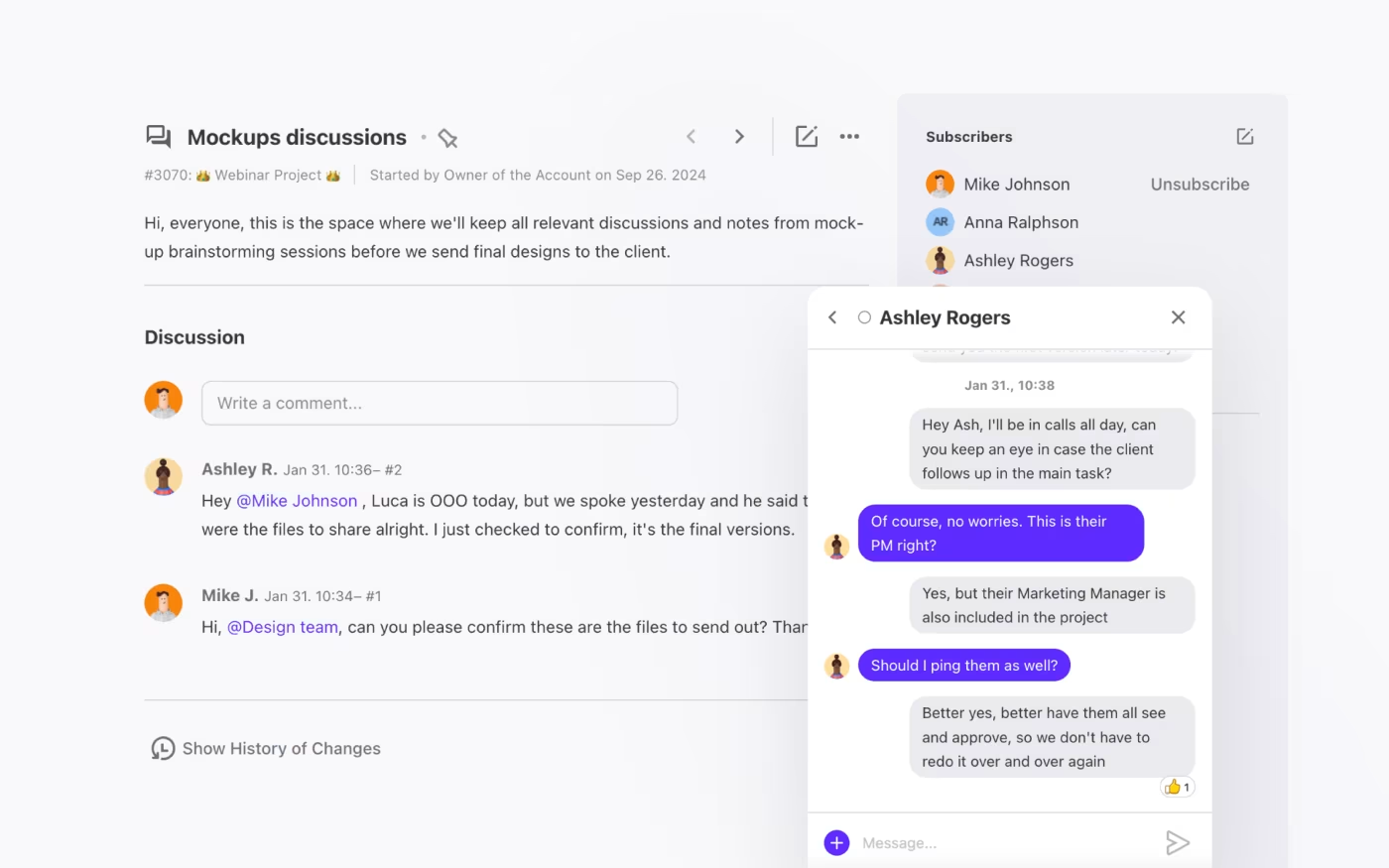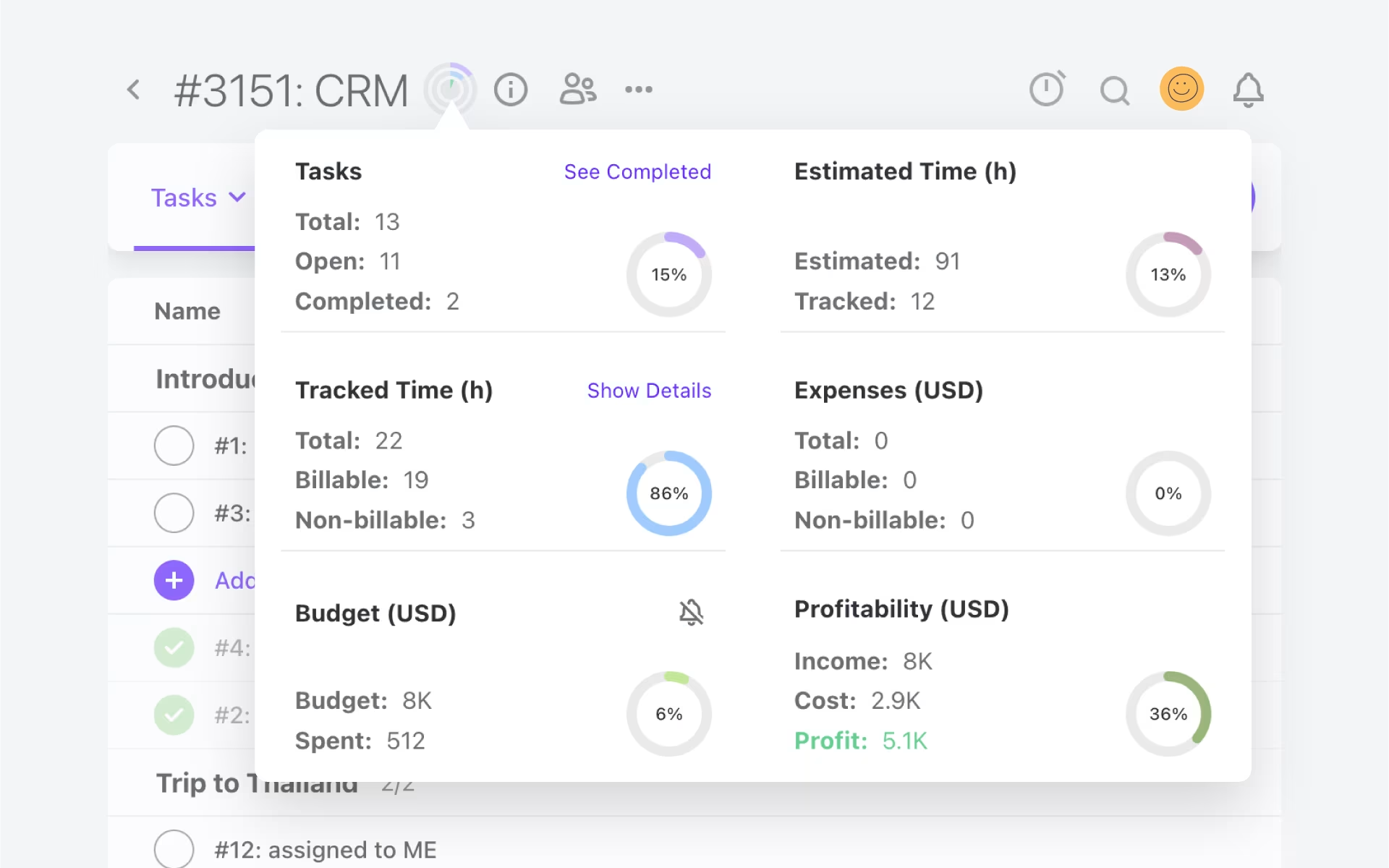Project execution is not just about assigning tasks and forgetting about them. From managing a team, to controlling risks and making sure the deliverables are exactly what your clients or stakeholders are looking for, the execution phase demands refined juggling skills.
Whether you’re launching a new initiative or running a project that’s a carbon-copy of a previous one, you’ll need strong communication and problem solving skills to stay on track to success.
But what are the things that lead to a successful project execution? We tell you what you need to know, and give you the six-step process that helps prevent and minimize major and minor execution pitfalls.
What is the project execution phase?
The project execution or project implementation phase is the third part of the project lifecycle where you action all the tasks outlined in your project plan. It is the longest phase, and the one where work is allocated, monitored, and delivered.
A key part of project execution is also identifying and managing risks that might pop up. The most common risks are scheduling or resource issues, timeline or budget blowouts, and scope creep.
While communication and collaboration are vital throughout all project phases, it’s particularly important during the implementation phase. Good project managers do their best to manage team and stakeholder expectations by:
- Providing regular progress updates on deliverables
- Handling feedback and concerns
What are execution gaps?
One of the biggest challenges for project teams in the execution phase is execution gaps. These are discrepancies between what you planned to have happen and what’s actually being delivered.
Execution gaps or failures can happen for many reasons:
- Communication issues and misaligned messaging
- Misunderstanding of roles and responsibilities
- Vague project objectives or undefined scope
- Resource or skill mismatches
- Lack of direction from project leads
- Poor accountability of task owners
- Oversight of risks
The most common causes of execution gaps are inadequate resource allocations, whether that be people or budget. Both of these can be prevented with proper planning, where you base allocations on past, real-world projects.
6 steps for successful project execution
Now that you understand what project executiois, let’s dive into the six steps you need to take to execute your project successfully.
Step 1: Execution kick-off meeting
The first step is to hold a project kickoff meeting. This is where the entire project team gets together with all the stakeholders, clients, and collaborators (if necessary), and the project manager establishes the purpose of the journey ahead.
While a kickoff meeting is not a must, it’s beneficial because it sets the foundations and helps project members unite around the common goals. It also helps build relationships and provides an opportunity for everyone to meet and ask questions early in the game. This will make collaboration smoother in the weeks to come.
In the execution kick-off meeting, the project lead will usually go through five key elements:
- Project timeline – So everyone understands the timeframes they need to work with.
- Milestones – So everyone understands how milestones have been segmented.
- Deliverables – So there is no misalignment on scope, and everyone knows what a quality deliverable looks like.
- Risks – So everyone stays alert and can pick up major and minor risk factors.
- Roles & responsibilities – To manage expectations and make sure everyone is crystal clear who owns which piece of the project puzzle.
Another thing that will be established in this meeting is the communication and updates schedule. Usually, the project manager will explain where and how often project updates will be provided and who is in charge of managing communication updates.
Step 2: Assign tasks via a project management tool
The next step is to assign all tasks via a project management tool. You can do this in ActiveCollab, a project and workflow management tool that lets you select task owners for each task, set a due date, and a time estimate. This helps everyone stay on schedule.
Something to keep in mind when assigning tasks and deadlines is to also mark task dependencies within the tool. Make sure the due dates for all child tasks precede dependent parent tasks. If you need help with this, check out our post on managing task dependencies.
Within each task, you or the task owner can also include descriptions and add files, links, or resources needed to deliver the task to the standard and quality expected.
Another helpful feature in ActiveCollab that fosters project collaboration is the ability to add subscribers to a task. Task subscribers will be notified of any updates and changes made to the task. It’s a good idea to use this feature to subscribe owners of dependent tasks so they can have an overview of the progress of the task they are waiting for to be completed before they can take action on their work.
Step 3: Do two-way communication, log updates & make owners accountable
When all project tasks have been matched up with an owner, it’s time to take the lead in cultivating a collaborative approach to project completion. Encourage your team to work together across any changes, particularly delays.
Project management tools will simplify much of the communication work for you. As long as task owners remain accountable and regularly update the progress of their individual tasks, all the people involved (task subscribers) will be notified and kept up-to-date.
Likewise, as the project lead, the project manager needs to respond to any queries or concerns task owners may have throughout the implementation phase. In ActiveCollab, this can be done through task comments and mentions.
Having an in-app chat or discussion space like the one Activecollab provides users also lets remote project teams connect and have casual conversations or brainstorming sessions.

Step 4: Monitor progress, manage scope creep
Step four is to monitor the progress of tasks and manage any red flags. As a project manager, it's your job to keep the project moving to schedule (and on budget). You also want to make sure everyone is working in sync.
ActiveCollab’s project progress dashboard lets you track task completion rates, track logged time against estimated time, budget spend, expenses, and overall project profitability.

You can use this dashboard daily to stay up to date and inform key stakeholders of how the project is moving along.
Another thing to stay alert to is scope creep. This can blow any project out of proportion and quickly make it a lost cause, where the end goal is either reached with serious budget and timeline misalignment, or it completely ruptures the entire project's approved schedule.
To prevent this from happening, project managers should stick to the approved scope statement and continually reinforce scope boundaries. As an extra measure, you can also implement a formal change control process, which will dissuade scope expansion requests. For more hints on staying within scope, check out our guide on how to avoid out of scope when managing projects.
Step 5: Manage issues, schedule & resource changes
The next step is to establish a process for managing risks and issues when they do occur.
The chance of running a project from start to finish exactly as you planned is next to impossible. So you need to have a contingency plan, or at the very least, an issue or risk register in place. This will give you a full overview of identified risks and help track their resolution, one by one.
Now there’s no point in having any of these if there’s no one to monitor and manage them, so it might be a good idea to allocate someone in the team to keep track of the risk register.
For schedule or timeline changes, it always helps to share and regularly view your project in timeline or Gantt chart view. In ActiveCollab, this is also the best way to keep on top of dependent task connections, where the tool automatically updates and aligns all dependent tasks when changes are made in one.

Managing resources in terms of workloads and changes can be mind-boggling during a project. Tools with resource planning capabilities like ActiveCollab can make it easier by giving you visual dashboards of capacities and workloads. It also lets you log in leave, and sick days, which can impact delivery deadlines.
In ActiveCollab, you can also create a chat group for your entire project team that only serves the purpose of quickly communicating risk, schedule, or resource changes as an FYI. Even though changes will be included in individual tasks, for large or complex projects, this chat group option lets you keep everyone in the loop, without including them in every task.
Step 6: Execution close finale
The final step is wrapping up the execution phase, getting deliverables ready for final sign off and handover. This involves a couple of steps:
- Checking final deliverables meet requirements of project scope
- Doing a final quality check of deliverables
- Getting formal sign-off from stakeholders or clients the deliverables are satisfactory
When all of this is done, the project manager can then move the project into the fourth part of the lifecycle, the project closure phase.
2 things to keep an eye out for during project execution
We’ve discussed most of the key challenges you might come across in each of the steps above. However, there are three particular ones you need to keep a close eye on or have in mind before you even start the project execution phase.
Stakeholder or client misalignment
According to PMI, three out of five projects are not aligned to strategy. This is a problem because if it there is no alignment, chances are the final deliverable will not add value to the client or organization.
To avoid this issue, we cannot stress how important it is to connect with your stakeholders, understand their needs and the intent of the project. What are they trying to accomplish with the deliverables? What is the impact or result they want to see reflected in reality?
If you engage your stakeholders and clients early and establish priorities and project intent you can make sure you stay on the same page. Staying connected and having open and honest conversations during updates throughout the entire project journey will help you avoid costly delays, rework, and conflicts. So do your best to avoid stakeholder or client misalignment.
Team engagement & morale
Another indirect culprit of project downfall during the execution phase is low team engagement and morale. This is where every project manager needs to put their empathetic leadership skills into action. Why? Because Gallup tells us that managers account for 70% of the variance in team employee engagement.
If you can build a good relationship with your project team and keep morale and engagement high, you automatically increase the change of a positive outcome.
To avoid a dive in team engagement and morale take these three steps:
- Having regular check-ins with your team
- Providing support when you notice someone is struggling
- Recognizing and celebrating good work with the whole team
How ActiveCollab helps you optimize project execution phase
Project execution is knotty. With so many moving parts, it can be hard to stay on top of all the moving tasks and issues that might strike. But there’s a lot you can do to make the process easier. And it all starts with having the right tools and approach.
As a project management tool, ActiveCollab gives you a platform that simplifies the entire job of running a project. With easy task assignment, timeline tracking and workload dashboard you have everything you’ll need to untangle the complex stuff and bring things into order.
A variety of communication options make collaboration for the entire project team effortless and uncomplicated. Whether you want to have a discussion with the entire team or send a quick check-in message to a member you think needs some extra help, ActiveCollab lets you choose how you communicate.
Designed for project and service-based business working with simple and complex initiatives, the tool helps you set up entire workflows from start to finish.
Want a project management tool that lets you execute projects with less stress? Sign up for ActiveCollab’s 14-day free trial or book a demo with one of our people. Let us help you be a master of project execution!


